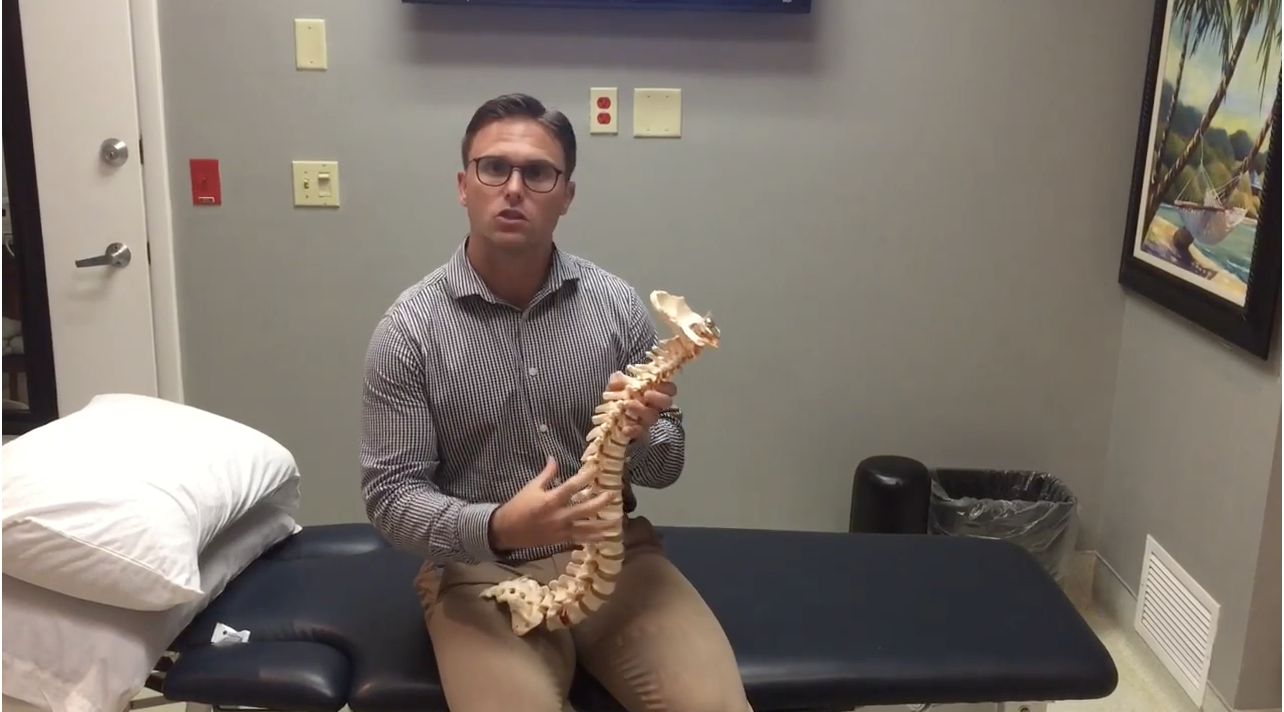By: Scott Gray
Shoulder and elbow injuries are common in pitchers. The cause of them can be an array of factors, but…
One of the main contributors to these type of injuries is limited thoracic spine mobility.
Whether it be muscle or joint tightness or a combination of the two, we’ll need to get this part of the body moving again.
In this post, I’ll show you three new mobility exercises you’ll need to perform with your pitchers to help reduce blowing out their shoulders or elbows. To start, I’ll address the anatomy of the thoracic spine, clarify why optimal movement here is essential, and finally, present the three exercises.
The Anatomy Of The Thoracic Spine:
The thoracic spine consists of 12 vertebrae and 12 ribs.
It also contains some groovy stuff such as our heart, lungs, and some other organs that it encloses.
But in regards to muscles we’ve got a lot going on….
We have our abdominal and lower back muscles in addition to the majority of our scapular muscles attaching to this area of the spine.
You’ve probably heard these muscles are important before, right?
You bet.
Watch This Quick Video Of Me Describing The Anatomy Of The Thoracic Spine & It’s Importance Below…
Why Movement Here Is Crucial….
The thoracic spine is vital to rotational athletes, especially pitchers. It’s the power house of the trunk. When moving inefficiently, usually the lumber spine, shoulder, or elbow can pick up for the slack.
That’s why we see many shoulder and elbow injuries with pitchers (hint, hint).
This is just one of the many reasons why it is essential to get this region moving.
Watch this quick video of me describing how the shoulder and elbow compensate below…
Another reason why motion is important in the thoracic spine is because it turns on your muscles. As mentioned above, our entire core, back, and scapular muscles attach to the thoracic spine. When movement is negligible, muscles literally can’t work to produce force.
For instance, when the joints don’t perceive relative motion, the muscle doesn’t feel elongation. Remember when you took human physiology? The muscle spindles cause muscles to contract after they’ve been stretched.
Muscles work eccentrically before concentrically in most cases. This is where they get their stimulus to contract.
Hence, if no motion is happening at the thoracic spine, these powerful and important muscles can’t contract to help provide mobility, stability, or power.
Not only is movement important here, but we must also get it in all three planes of motion. What I mean is in the sagittal, frontal, and transverse planes together.
This is one of the many reasons why some thoracic spine exercises are better than others….
We need to consider all three planes of motion, not just rotation or sagittal plane extension.
The Three Exercises You’re Not Doing…
Before I disclose the three exercises for pitches I’d like to say why you probably haven’t seen these exercises.
The problem with most thoracic spine mobility programs is they’re done on the floor and….
Not in all three planes of motion combined.
The thoracic spine and rib cage moves in 3D at all times!
Hence- we need to increase mobility this way.
For instance, we can do quadruped thoracic rotation exercises because they do have their place but then we need to implement them in the position the pitcher will be in or combine another plane of motion with it.
Watch me describe this motion that pitchers go through during pitching below.
Without further ado here are the three exercises you should be performing with your pitchers. …
Video 1 – Standing Type 2 Thoracic Mobility
Video 2- Assisted Type 2 Thoracic Mobility
Video 3 – Resisted Type 2 Thoracic mobility
Concluding Remarks on Thoracic Mobility for Pitchers
Thoracic spine mobility is important for pitchers to have, especially in all three planes of motion and with type 2 biomechanics.
If you do increase mobility of the thoracic spine in your throwers, your athletes will thank you for keeping their shoulders and elbows healthy.
About the Author:
 Dr. Scott Gray is an international speaker and renowned physical therapist specializing in sport and spine injuries. He routinely writes on his website www.scottgraypt.com where he educates other sport & manual physical therapists in addition to interviewing other elite physical therapists on his Redefining Physical Therapy Podcast. He currently resides in Southwest Florida where he helps athletes recover from injuries and return to sport.
Dr. Scott Gray is an international speaker and renowned physical therapist specializing in sport and spine injuries. He routinely writes on his website www.scottgraypt.com where he educates other sport & manual physical therapists in addition to interviewing other elite physical therapists on his Redefining Physical Therapy Podcast. He currently resides in Southwest Florida where he helps athletes recover from injuries and return to sport.


0 Comments for “3 Thoracic Mobility Exercises You’re Not Doing with Your Pitchers”